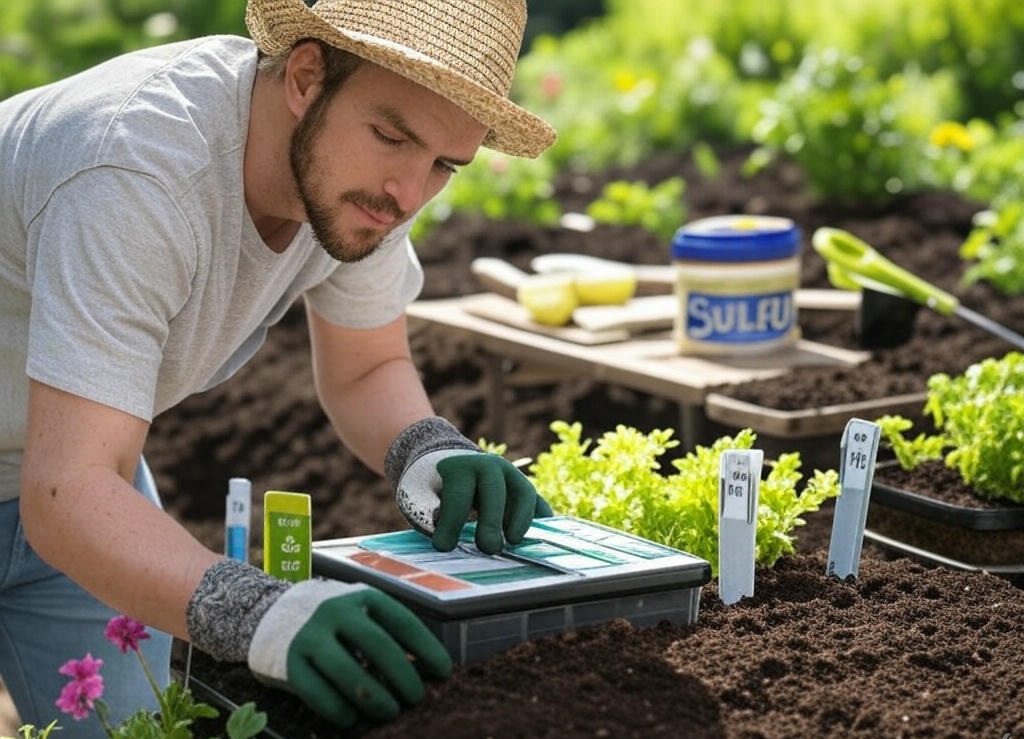Soil pH plays a vital role in how well your plants grow. The pH level of your soil affects how nutrients are absorbed by plant roots, and different plants thrive in different pH ranges. Understanding and adjusting your soil’s pH is essential for healthy, thriving plants. Here’s a guide to help you understand soil pH and how to improve it for optimal growth.
What is Soil pH?
Soil pH refers to the acidity or alkalinity of the soil. It’s measured on a scale from 0 to 14:
- pH 7 is neutral (neither acidic nor alkaline).
- Below pH 7 indicates acidic soil.
- Above pH 7 indicates alkaline soil.
Most plants prefer soil that’s slightly acidic to neutral, with a pH between 6.0 and 7.0. However, some plants, such as blueberries, prefer more acidic soil, while others, like lavender, thrive in alkaline conditions.
Why is Soil pH Important?
Soil pH affects:
- Nutrient Availability: The pH of your soil determines how well your plants can absorb essential nutrients. For instance, if the soil is too acidic or too alkaline, plants may not be able to access nutrients like nitrogen, phosphorus, and potassium, leading to poor growth.
- Soil Microorganisms: Different pH levels support different populations of soil microbes. These microorganisms help break down organic material and enhance nutrient availability. Some beneficial microbes thrive in acidic soils, while others prefer neutral or alkaline conditions.
- Plant Health: Certain plants are sensitive to soil pH. For instance, azaleas, camellias, and rhododendrons prefer acidic soil, while plants like asparagus and cabbage thrive in alkaline soil.
How to Test Your Soil’s pH
Before you can improve your soil’s pH, you need to know what it currently is. Here’s how you can test it:
- Use a Soil Test Kit: You can purchase a soil pH test kit from a garden center or online. These kits usually involve mixing a soil sample with a testing solution or indicator, which will show the pH on a color chart.
- Send Soil to a Lab: For a more detailed and accurate test, you can send a soil sample to a local agricultural extension service or private lab. They will provide a comprehensive analysis of your soil, including its pH and nutrient content.
- DIY Methods: For a quick, though less precise, test, you can use a baking soda and vinegar test. Mix some soil with water to create a slurry. Add vinegar to the mixture; if it fizzes, the soil is alkaline. If you add baking soda and it fizzes, the soil is acidic.
How to Improve Your Soil’s pH
Once you know your soil’s pH, you can take steps to adjust it to the ideal range for your plants. Here are some common ways to modify soil pH:
1. To Lower Soil pH (Make It More Acidic)
If your soil is too alkaline and you need to lower its pH, here are some methods:
- Add Organic Matter: Incorporating organic matter like compost or mulch can naturally lower pH over time. Organic materials release humic acids as they decompose, which helps acidify the soil.
- Use Elemental Sulfur: This is one of the most effective ways to lower soil pH. Microorganisms in the soil convert sulfur into sulfuric acid, which lowers the pH. Follow the instructions on the sulfur packaging for the right amount to use.
- Add Peat Moss: Peat moss is naturally acidic and can be added to soil to help reduce pH. It also improves soil structure and water retention.
- Use Pine Needles: Pine needles have an acidic nature, and adding them to your soil can help lower the pH. They also improve soil texture and drainage.
2. To Raise Soil pH (Make It More Alkaline)
If your soil is too acidic and you want to raise its pH, you can:
- Add Lime: Ground limestone (calcium carbonate) is commonly used to raise soil pH. It reacts with the soil’s acidity to neutralize it. Dolomitic lime is an alternative, which also adds magnesium to the soil.
- Wood Ash: Wood ash from a fireplace or garden bonfire is alkaline and can help raise soil pH. It also provides potassium and trace minerals to the soil.
- Bone Meal: This is an organic alternative that helps raise pH while also adding phosphorus, which promotes root growth and flowering.
- Compost and Manure: While compost is more commonly used to improve soil structure and fertility, compost made from materials like lime or high-calcium compost can also help raise soil pH.
Best Practices for Soil pH Management
- Make Changes Gradually: When adjusting your soil’s pH, do so slowly. Drastic changes can harm plant roots. Make small adjustments over time and retest the soil regularly.
- Work Amendments Into the Soil: To ensure that pH-adjusting materials like sulfur or lime work effectively, mix them into the soil to a depth of at least 6 inches. This ensures the amendments reach the root zone.
- Consider Plant Preferences: Different plants have different pH preferences. Always check the recommended pH range for the plants you’re growing and adjust accordingly.
When to Adjust Soil pH
Adjust your soil pH before planting, as it’s easier to modify the soil before your plants take root. However, if your soil pH is off during the growing season, it can still be adjusted, but it might take some time to show results. Be patient, and remember that pH adjustments can take several months to fully affect the soil.
Final Tip
Maintaining the correct soil pH is an ongoing process. It’s important to regularly test your soil and make adjustments as necessary. By understanding and managing your soil’s pH, you can create an optimal environment for plant growth, ensuring they have the nutrients they need to flourish.

Leave a Reply